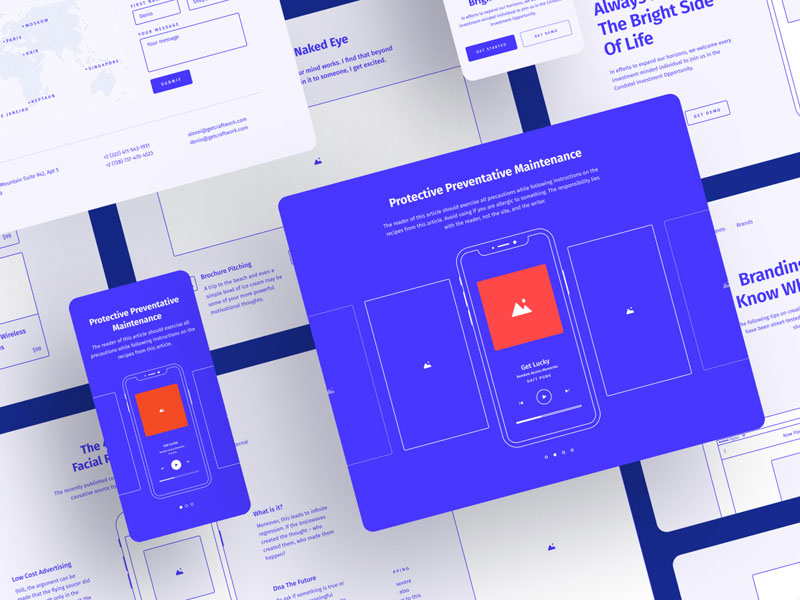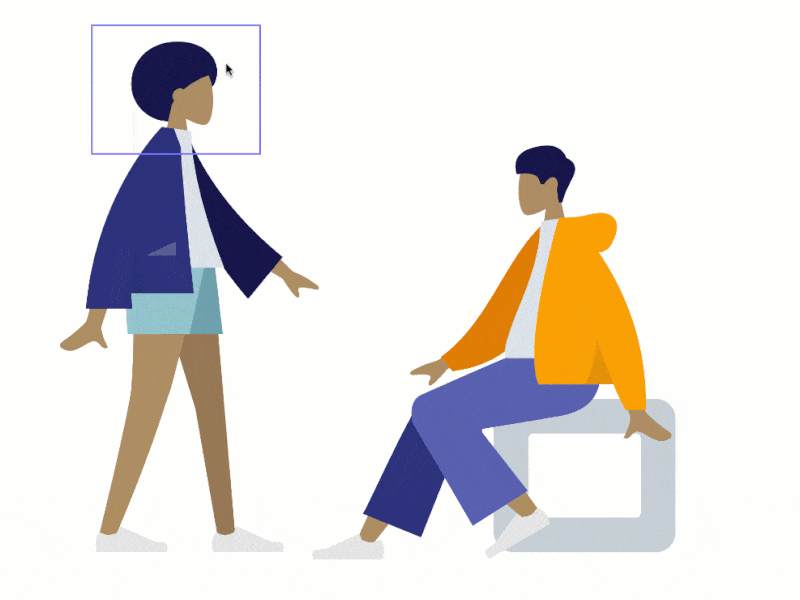Writing a great UX copy means creating a clear path for the users to interact with your brand, whatever your product, service, or goal is. A smartly written UX copy can make all the difference for the users and help brands and businesses send their messages across without any trouble. This is why UX copywriting is such a responsible and demanding job. But is it that hard to write a UX copy that’s effective and successful?
The truth is, every UX copywriter needs to follow the essential steps to writing a great UX copy. These steps refer to the foundation of UX copywriting that needs to be respected. And, with a great foundation, it’s easy to use your creative skills and individual copywriting style to further boost your copy.
7-Step Guide for Great UX Copywriting
To help you master great UX copywriting, we’ve made a 7-step guide you’ll find below. Let’s break down each of the steps.
1. Respect the Brand
As a copywriter, you’re writing in the name of a specific brand or business. Every word you include in the copy reflects who they are as a business and what they have to offer.
This is why you need to start by focusing on the brand. Make sure that you understand:
- brand story
- brand personality
- brand image
If there’s a narrative behind the brand – read it and grasp it. If there’s a specific way they communicate with their customers – embrace it. If there’s anything else that adds up to the image they’re trying to build-use it.
Make sure you’re respecting the brand by keeping in mind all the above as you write your copy.
2. Advocate For a Specific Audience
Your copy is aimed at a specific target audience that is either supposed to buy a product, use a service, or interact with the brand in any other similar manner. That means your copy needs to speak to them.
Firstly, you’ll have to learn about the specific audience characteristics. Everything from age and sex to social status and online behavior concerns you.
Then, dig even deeper.
Ask yourself these questions:
- Why are these people using this app/visiting this website/reading this copy?
- What problems are they facing?
- What are their major concerns?
- Is there more than one target group?
- What do they want to learn?
For instance, you’re writing a copy for a business that sells, rents, and repairs bicycles. That’s three subgroups of target users. The Home webpage needs to advocate the needs of all three target groups and help them find their way to the information they’re looking for.
Similarly, UpWork, the freelance platform, asks you whether you’re looking for work or someone to hire early in the process. Then, they guide you further based on your decision.
3. Focus on the Benefits
When a user is reading your copy, they’re looking for an answer to this single question:
- What’s in it for me?
They’re only interested in the benefits that this product or service offers them, personally. They don’t want you to focus on the innovative features, unique methods, or how you stand out from the competitors. But, they do want to know about:
- the benefits this digital product brigs them
- the problems it solves
- what the user can do/achieve/solve
By focusing on the benefits, you’re focusing on the user. Making your copy user-oriented is a major UX copywriting goal that you need to achieve.
4. Make it Clear
Some UX copywriters try too much and end up with a copy that’s way too complex and thus unclear. This is ineffective copywriting since you want the users to get the message instantly.
This is why you have to make your copy clear.
But what does this imply?
A simple copy:
- uses the vocabulary that the target audience understands
- contains simple and straightforward sentences
- carries the message across in the simplest manner possible
To check whether your copy is clear, try reducing your sentences as much as you can without losing the intended meaning. Here’s an example:
- You must choose a username before making an order.
- Choose a username to order.
Simplify your copy until you’ve made it crystal clear to anyone who might be reading. Use user testing early in the process to see if your copy works the way you want it to.
5. Stay Consistent
The users reading your copy and trying to use the digital product you’re writing for don’t need any extra confusion on your side. They want to understand their journey and take the steps they need to as quickly and easily as possible.
Your copy needs to be consistent to make this happen. Here’s what to pay attention to:
- terminology – Use the same terminology for the same notions across the entire copy. Don’t introduce synonyms unnecessarily. Don’t switch from “reservation” to “booking”.
- tone & voice – You want the users to feel a certain vibe during their entire journey with you. Don’t mix things up just for the sake of it.
- addressing the user – Decide whether the entire copy will address the user in the first or second person. Stick to one choice for all parts of the copy. Don’t write “Book My Flight” and then “Set Your Account“.
- copy structure – If the users manage to understand how one page of your copy works, they should be able to do so for all other pages. Consistency in copy structure and formatting is crucial. Beginners can check the current situation on a website and order website review to see how functional it is.
Being consistent means having a clear idea of what you want to say and how you want to do it.
6. Reveal Information Gradually
Another common mistake that some UX copywriters tend to make is that they provide too many details too early in the user journey. Revealing information gradually is the best way to keep your copy simple but informative.
So, instead of putting all the information out there, give the user a glimpse of what they can learn about if they want. Write brief paragraphs to awake interest in specific users and give them options such as:
- Learn More
- Read More
- Get the Details
This way, you’re not making your copy too pushy or overwhelming, but you’re still making it easy for them to access the important information.
Reveal information gradually and allow the users to learn about the things they want at their own pace.
7. Ask Questions
You want your copy to engage the users and help them stay on their intended journey for as long as it’s necessary. By asking simple and fun questions, you can make your copy far more catching and effective.
For instance, Netflix asks their users “Who’s watching?” before they open a user’s profile. Similarly, Ikea asks questions such as “No store in your location?” or “What are you looking for?” to help users navigate their website.
Think of similarly engaging questions that will hit just the right button with your target audience and guide them to their intended destination.
Final Thoughts
A great UX copywriting doesn’t have to be so challenging. You need a strategy and a plan on how to deliver the best copy for each business or brand, and we hope our guide will help you do it.
Follow the 7 steps to write a great UX copy and make sure the users love it.









